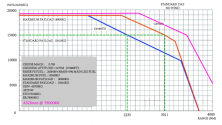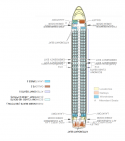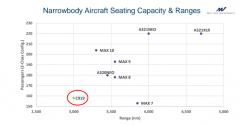You are using an out of date browser. It may not display this or other websites correctly.
You should upgrade or use an alternative browser.
You should upgrade or use an alternative browser.
COMAC C919
- Thread starter Deino
- Start date
Wow, this looks like a much much better platform to replace KJ-500 as an AEW&C plane
Based on reviews in 2016, it is totally obsolet. The data of C919 is wrong, and the trust in 737MAX now look like a joke…View attachment 103070
View attachment 103071
FYI - this is the consensus view of the C919 on Wall Street. Imagine thinking what you heard in 2016 from Chinese airlines is relevant in 20-f'ing-22
Very close to the A320neo WVs 055 and 069 (within a couple 100kgs). 800kg more usable fuel capacity, but probably around 2t heavier empty (Airbus doesn't really publish empty weights, as they have 2 engine variants and an insane variety of cabin configs). This vindicates the Leeham News & Comment info from a while back to some extent:

The advantage for the A320neo is likely due precisely to the higher OEW preventing the C919 from uplifting the same fuel weight at max. payload. That said, these diagrams in the ACAPs, as indicated by the comments, are a rough indication only, since OEW varies so much based on customer configuration.
Similarly, the seating capacity, if you're going to pin the A320neo at 180, should be 174. But that these numbers weren't on an equal basis was obvious from the fact that the 737MAX 8 was lower (max. is actually >200!). More to the point, according to the floor plan the cabin space actually given over to passenger seating is virtually the same down to the centimeter! The C919 loses these 6 seats (one row) solely by having traditional higher-pitch emergency exit rows. Unfortunately, I don't think you can densify the cabin beyond 180 seats (as on the A320, which wasn't always this efficient) without major surgery, because the additional room is in front of the forward doors. That might mean a small remaining penalty in fuselage wetted area per passenger, despite the more modern cockpit section.

So all in all we might nudge the C919 up by 16 seats and 200nm in the passenger capacity vs. range graph:

Also of note: Like the MS-21 the C919 electical system uses engine variable frequency generators instead of conventional IDGs! So much for technology being held back.
Last edited:
From 沉默的山羊's weibo account. So about 3 months of test flight before revenue service. This seems a little cautious (I normally would expect 1 or 2 months for a new fleet type) but not completely out of line for a new aircraft entering service. Maybe also delayed by Chinese new year. But let's see how quickly they can get it up to run regular schedule今天(9日)上午,中国商飞公司将向中国东方航空交付全球首架C919大型客机。此后东航将开展不少于100个小时的空机验证飞行,大概在明年3月份正式开始载客运营。





